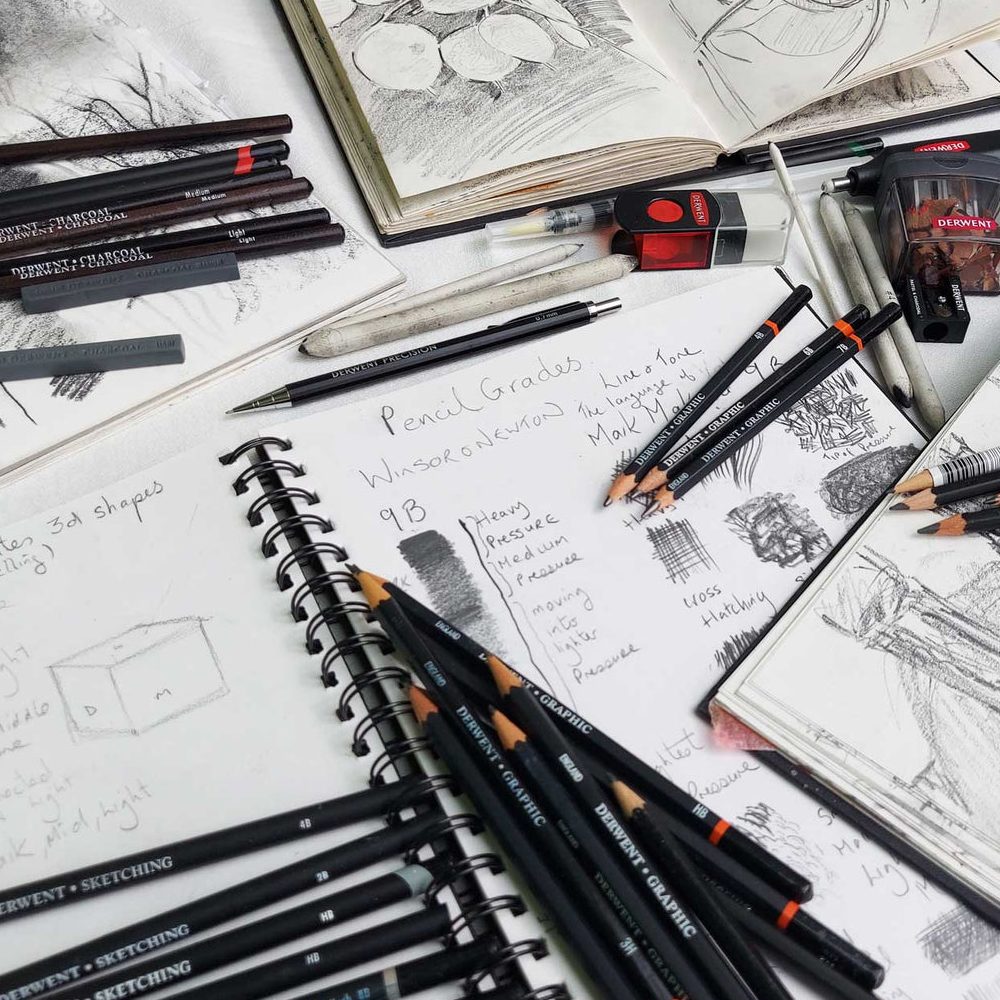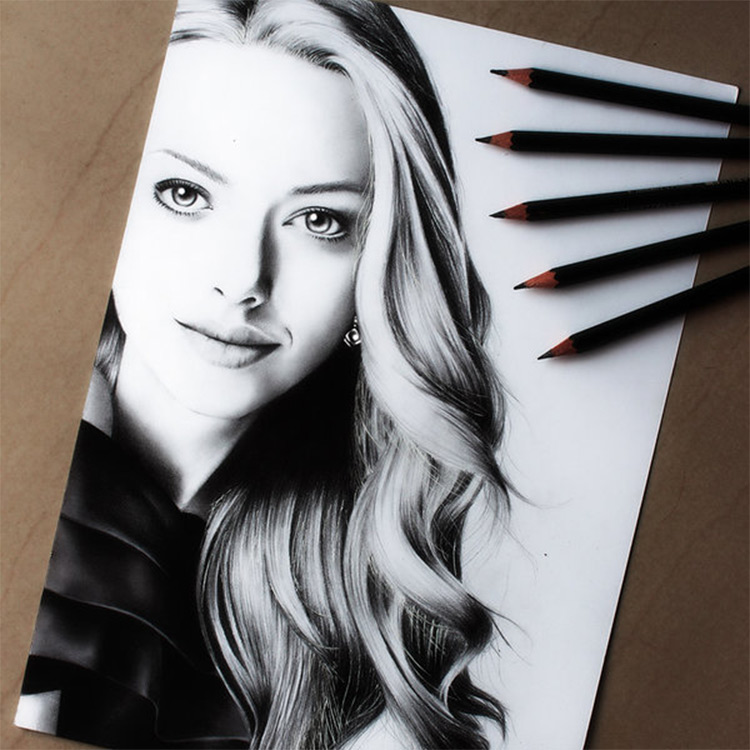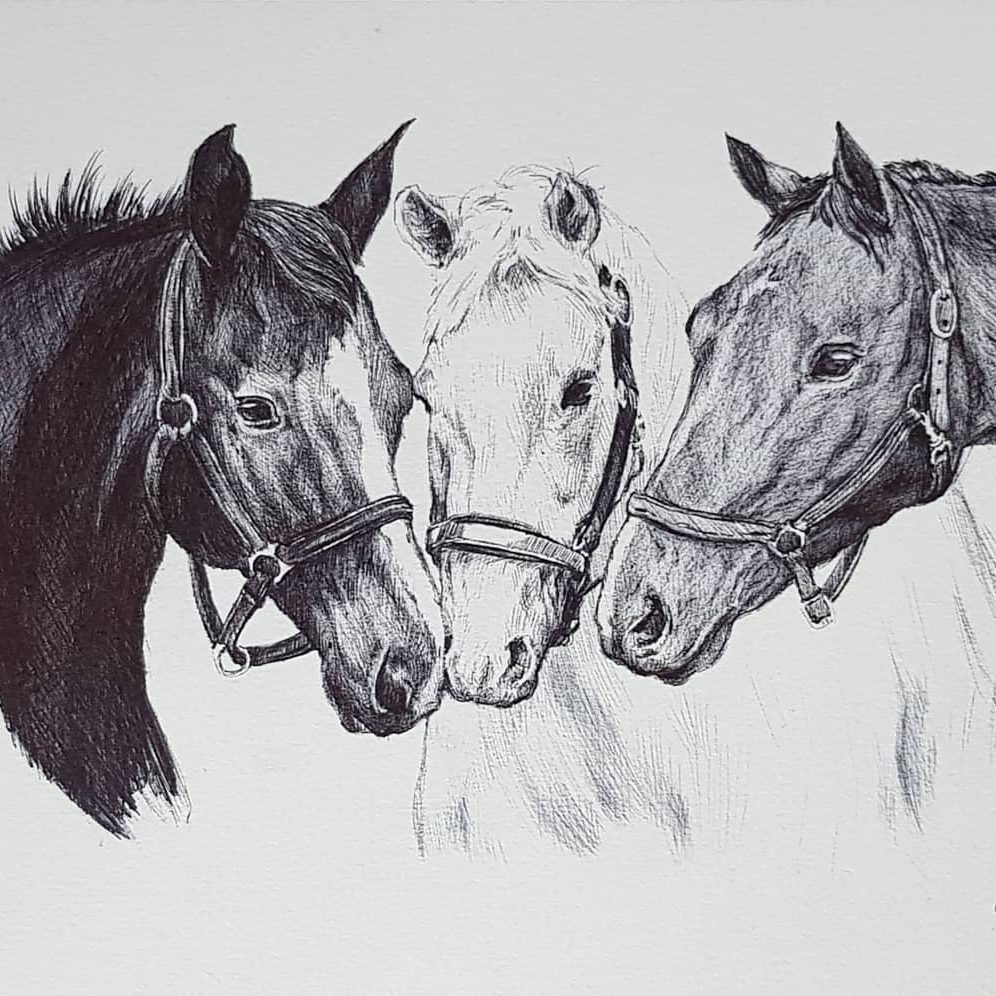Artists have long favored both graphite and charcoal for their unique qualities, allowing them to create a wide range of effects in their work. While both mediums are popular for drawing, they each offer distinct characteristics and advantages. This article will explore the differences and similarities between graphite vs charcoal drawing, helping you choose the right medium for your artistic expression.
Understanding the Basics of Each Medium
What is Graphite?
Graphite is a form of carbon known for its slippery texture, which enables smooth application across a surface. It comes in various forms, including pencils of assorted hardness levels and powdered forms. Graphite pencils are categorized on a scale from H (hard) to B (soft), with F (fine point) in between. The hardness of the pencil affects line sharpness and darkness, allowing artists to control their drawing technique and finish.
Graphite produces clean, sharp lines, making it suitable for detailed work. It reflects light well, giving it a luminosity that allows for a wide range of tonal values. Whether you are sketching, shading, or rendering, graphite can accommodate numerous artistic approaches.
What is Charcoal?
Charcoal is made by burning organic materials, typically wood, at high temperatures in a low-oxygen environment. This results in a lightweight stick that can easily be manipulated to create various effects. Artists typically find charcoal in two main forms: vine charcoal and compressed charcoal. Vine charcoal, made from thin twigs, is softer and produces lighter marks, while compressed charcoal offers darker, denser lines and is often used for more expressive shading.
Charcoal allows for rich, velvety textures and a more organic feel. It is an excellent medium for large-scale works and can produce dramatic contrasts. The smudging capabilities of charcoal provide artists with the tools necessary for blending and layering, making it versatile for expressive styles.

The Visual Effects of Each Medium
Graphite Effects: Precision and Detail
Graphite is ideal for artists seeking detailed and precise representations. Its fine tips can create intricate lines, making it a favorite among illustrators and realistic portrait artists. The layers of graphite can be built up to create smooth gradients and nuanced tonal transitions, allowing for depth and dimension within the artwork.
The reflective quality of graphite enhances its ability to depict light, giving works a polished appearance. As a result, drawings in graphite often have a crisp and clean finish. For realism and technical accuracy, graphite is the preferred choice among many traditional artists.
Charcoal Effects: Texture and Expressiveness
Charcoal, on the other hand, excels at creating textured, atmospheric effects. Its inherent softness allows for a range of mark-making techniques, including sweeping strokes and fine details. Artists can manipulate charcoal easily, resulting in dynamic line work and thick areas of dark value.
The depth of charcoal allows for bold contrasts, making it perfect for dramatic pieces. It lends itself well to gestural drawing, as artists can create fluid, emotive lines. Charcoal drawings often convey a sense of immediacy and raw emotion—the medium speaks to the expressive side of the artist’s hand.
Techniques for Graphite Drawing
Hatching and Cross-Hatching
Graphite drawing offers various techniques to build up values and textures. Hatching involves creating parallel lines to establish light and shadow. This can be done using different pencil grades to produce varied tonal effects. Cross-hatching takes this technique further by intersecting lines, providing more depth and complexity to the drawing.
These techniques allow for clarity and finesse, making graphite perfect for detailed rendering. Artists often use hatching and cross-hatching to define form and create realistic textures, building up layers methodically for a polished final piece.
Blending and Smudging
Another common technique in graphite drawing is blending. Artists often use a blending stump or even their fingers to seamlessly transition between light and dark areas. This softening creates a more realistic look and enables smoother gradations of value.
However, careful consideration is necessary when blending, as it can sometimes cause unwanted smudges. Practicing the right amount of pressure is crucial for maintaining the integrity of the lines beneath. Proper blending enhances the overall composition and gives it depth without sacrificing the precision that graphite is known for.

Techniques for Charcoal Drawing
Gestural Drawing and Mark Making
Charcoal artists often rely on gestural drawing—a method of capturing motion, form, and essence through quick and expressive strokes. This technique allows artists to focus on the overall composition rather than getting bogged down by details. Using a variety of charcoal types, artists can create bold and dynamic lines that represent movement and feel.
Mark making in charcoal can range from light and airy to heavy and dark, allowing for a wide emotional spectrum. The expressive quality of charcoal makes it ideal for those who want to convey feelings, impressionistic styles, or a sense of urgency in their drawings.
Blending Techniques for Depth
Similar to graphite, charcoal can be blended to achieve various effects. Using a cloth or cotton swab enables artists to soften edges and create gradients easily. However, charcoal’s tendency to smudge makes it essential to work carefully when layering. This ability to blend allows for rich contrasts and smoother transitions between light and shadow.
Layering charcoal and then blending can create darker backgrounds or chiaroscuro effects that emphasize the subject. Artists often use an eraser to create highlights, revealing the paper beneath and offering additional depth to the work.
Surface Choices and Their Impact
Ideal Surfaces for Graphite
The choice of paper or canvas significantly affects the outcome of graphite drawings. Smooth, acid-free paper is ideal for detailed work, as it allows the pencil to glide effortlessly. This surface enables precision and fine lines to shine through, providing that crisp finish artists often seek.
For textural variations, some artists might choose slightly textured paper that can grip the graphite better. This choice allows for more layering options and a richer feel. However, finding the right balance between texture and smoothness is essential, depending on the artist’s intended style.
Ideal Surfaces for Charcoal
Charcoal thrives on textured surfaces that can hold the medium effectively. Papers with a toothy texture provide a better grip for charcoal, allowing artists to layer and blend effectively. Many artists prefer heavyweight charcoal papers or pastel papers specially designed for their unique composition.
Additionally, certain surfaces can play well with the expressive qualities of charcoal. Boards, canvases, or even toned paper can provide different backgrounds that enhance the depth and darkness achieved with charcoal. Experimenting with various surfaces helps artists discover how their work interacts with the chosen medium.

Cleaning and Maintenance Considerations
Maintaining Graphite Cleanliness
One of the advantages of graphite is its clean application. However, cleaning up after a graphite drawing can still pose challenges. Smudging can occur on both the drawing surface and the artist’s hands, so using a protective sheet can help maintain cleanliness.
To erase mistakes, artists often use kneaded erasers, which can gently lift graphite without damaging the paper. Regularly cleaning and maintaining your tools will address any accidental marks, allowing you to keep the artwork looking pristine.
Handling Charcoal Messiness
Charcoal can be messy, leaving powdery residue on surfaces and hands. Artists often find charcoal dust on their work area, as well as on the paper. To mitigate the mess, using a dedicated area for charcoal work can be helpful. Protective coverings for tables can make cleaning easier.
When working with charcoal, consider using fixed sprays to prevent smudging after completing the piece. These sprays help to keep the charcoal in place while minimizing the risk of mess later.
The Personal Touch: Choosing Between Graphite and Charcoal
Evaluating Artistic Goals
Choosing between graphite vs charcoal drawing often boils down to the intended style and artistic goals. If you prefer detailed, realistic rendering, graphite provides the precision required for fine line work. Its reflective qualities allow you to achieve a polished, sleek appearance in your pieces.
Conversely, if you seek a more expressive, dynamic quality in your drawings, charcoal is your best choice. The way charcoal allows for fluid and gestural strokes lends itself well to a more impressionistic or abstract style.
Experimenting with Hybrid Approaches
Many artists find benefits in utilizing both graphite vs charcoal drawing within their work. Experimenting with both mediums can yield fascinating results, showcasing the strengths of each. Mixing techniques may involve using charcoal for initial sketches and layering graphite for finer details or highlights.
In the end, the right medium should complement your creative vision and reflect your personal style. Whether you lean towards graphite, charcoal, or a combination of the two, both mediums open pathways for artistic exploration and expression.
Your Artistic Journey with Graphite and Charcoal
Understanding the differences and strengths of graphite vs charcoal drawing can significantly enhance your drawing experience. Both mediums offer distinctive advantages, allowing you to achieve a range of effects, from fine detail to expressive strokes.
By exploring the techniques, surfaces, and applications of each medium, you’ll be better equipped to determine which best aligns with your artistic vision. Whether you choose graphite, charcoal, or both, the journey of discovery in your drawing practice will undoubtedly lead to new avenues for creativity. Embrace the versatility of these materials and let your artistic instincts guide you toward your next masterpiece.